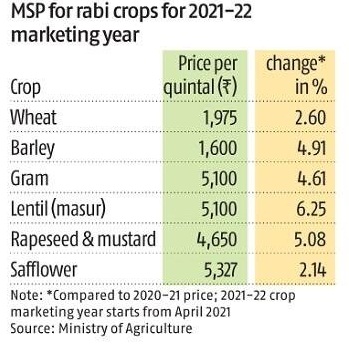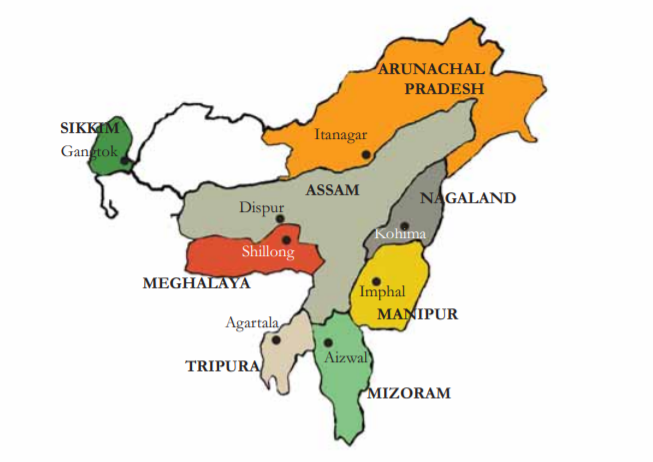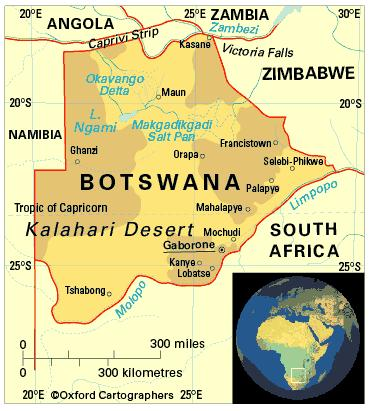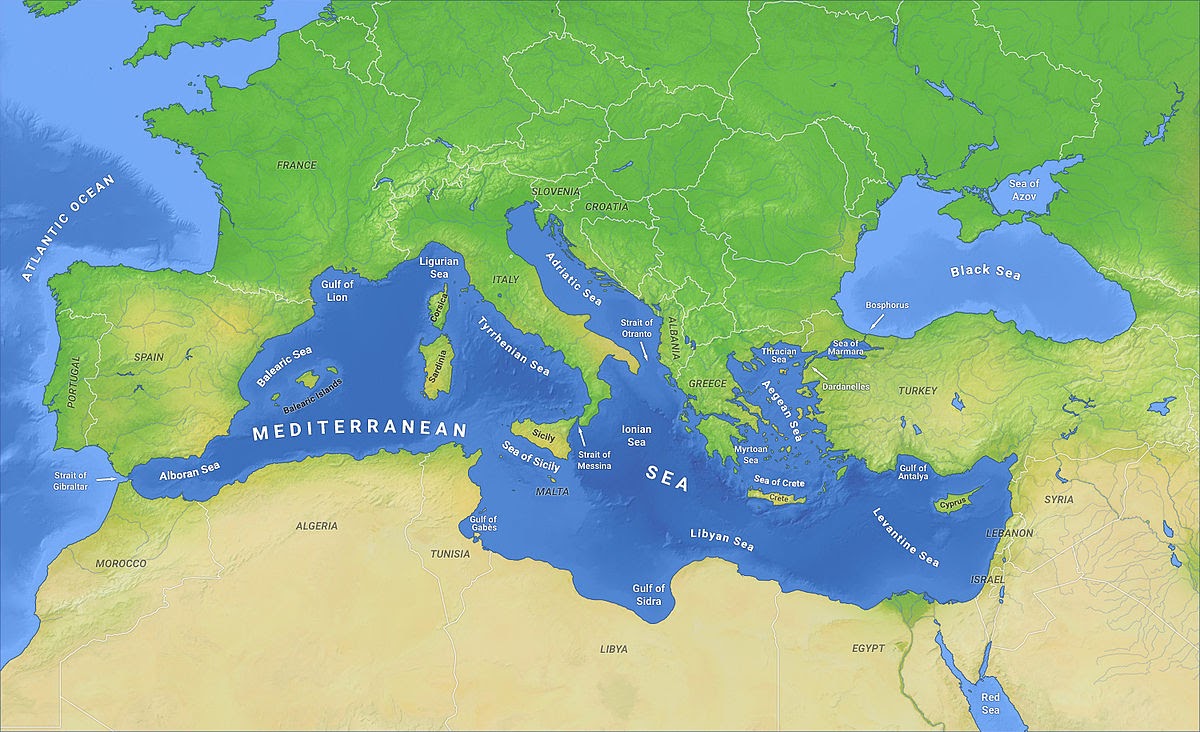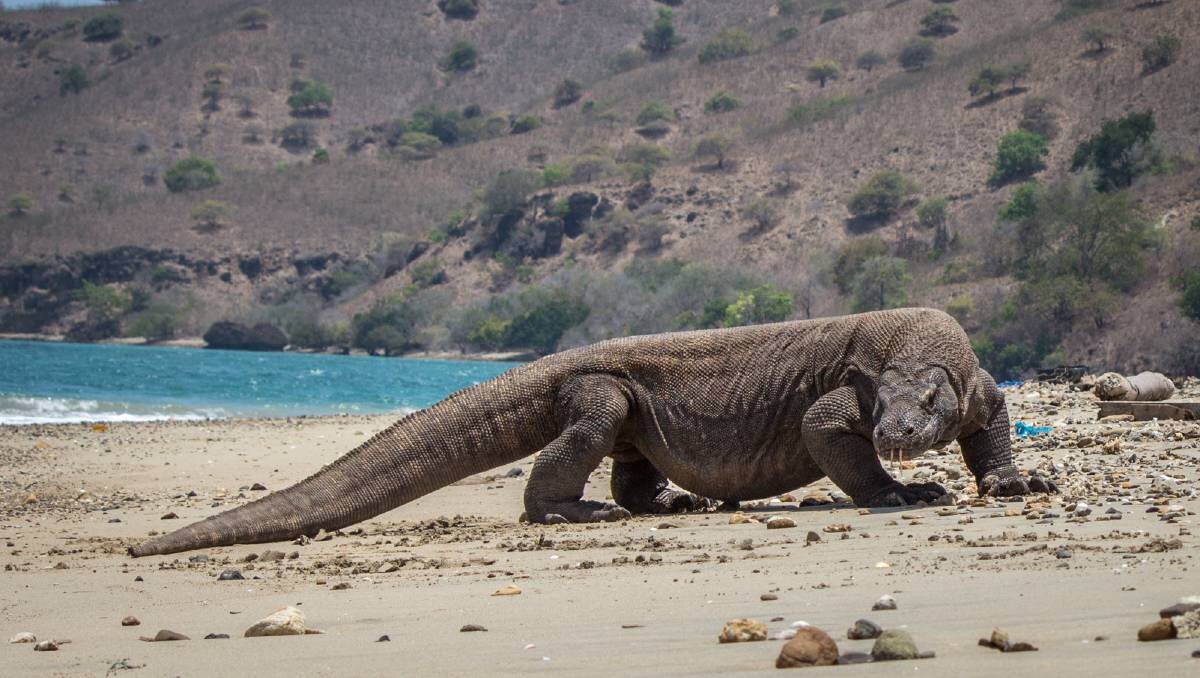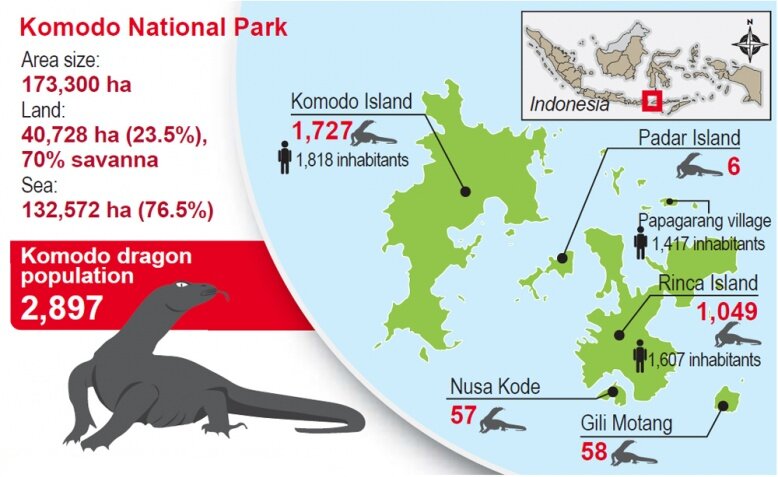MSP Raised for Rabi Crops
Why in News
Recently, the Cabinet Committee on Economic Affairs has marginally increased the Minimum Support Price (MSP) of six rabi crops for 2021-22.
- Rabi crops are agricultural crops that are sown in winter and harvested in the spring in India. Eg. wheat, barley, mustard etc.
Key Points
- MSP rates were hiked for wheat, barley, gram, masoor dal (lentil), safflower, and rapeseed and mustard.
- However, the MSP has seen a lower hike compared to 2020-21. The wheat MSP has seen an increase of just 2.6% — the lowest increase in 11 years.
- The increase in MSP is in line with the principle of fixing the MSPs at a level of at least 1.5 times of the All-India weighted average Cost of Production as announced in Union Budget 2018-19.
- The increase in MSP comes in the midst of a vehement protest by farmers, who fear that new agricultural marketing reforms will result in the phasing out of MSP and public procurement.
Issues with New Agricultural Reform
- The farmers are protesting against the three Bills which includes:
- Farmers' Produce Trade and Commerce (Promotion and Facilitation) Bill, 2020.
- Farmers (Empowerment and Protection) Agreement of Price Assurance and Farm Services Bill, 2020.
- Essential Commodities (Amendment) Bill, 2020.
- In short, the Bills aim to do away with government interference in agricultural trade by creating trading areas free of middlemen and government taxes outside the structure of Agricultural Produce Market Committees (APMCs).
- They also aim to remove restrictions on private stock holding of agricultural produce.
- This according to farmers will give preference for corporate interests at the cost of farmers’ interests and a lack of regulation in these non-APMC mandis are cause for concern for farmers.
- In the new system, companies will benefit as trading rates will not be under pressure of government procurement and they will be able to force farmers to reduce their rates.
- The absence of any regulation in non-APMC mandis is being seen as a precursor to the withdrawal of the guarantee of MSP-based procurement.
- These fears gain strength with the experience of States such as Bihar which abolished APMCs in 2006. After the abolition of mandis, farmers in Bihar on average received lower prices compared to the MSP for most crops.
- The government procurement also reduced significantly compared to other states.
- Government is relying on the market to realise better prices. However, recent data suggest limitations of market intervention in raising farm gate prices.
- For most crops where MSP-led procurement is non-existent, the decline has been sharper. Even cash crops such as cotton have seen a collapse in prices in the absence of government intervention.
- With rising input costs, farmers do not see the market providing them remunerative prices.
- The farmers also raise concern about the intent of the government to leave the price discovery mechanism on the market.
- It has time and again made ad hoc interventions, such as raising import duties on masur and a ban on onion exports.
Minimum Support Price
- The MSP is the rate at which the government buys grains from farmers.
- Reason behind the idea of MSP is to counter price volatility of agricultural commodities due to the factors like variation in their supply, lack of market integration and information asymmetry.
- Fixation of MSP: The MSP is fixed for 23 crops based on the recommendations of the Commission for Agricultural Costs and Prices (CACP), Ministry of Agriculture.
- Factors taken into consideration for fixing MSP include:
- Cost of cultivation,
- Demand and supply,
- Price trends in the market, both domestic and international,
- Inter-crop price parity,
- Terms of trade between agriculture and non-agriculture,
- A minimum of 50% as the margin over cost of production, and
- Likely implications of MSP (inflation) on consumers of that product.
- The CACP also makes visits to states for on-the-spot assessment of the various constraints that farmers face in marketing their produce, or even raising the productivity levels of their crops.
- Based on all these inputs, the CACP then finalizes its recommendations/reports, which are then submitted to the government.
- The government, in turn, circulates the CACP reports to state governments and concerned Central Ministries for their comments.
- After receiving the feed-back from them, the CCEA of the Union government takes a final decision on the level of MSPs and other recommendations made by the CACP.
- Procurement: The Food Corporation of India (FCI), the nodal central agency of the Government of India, along with other State Agencies undertakes procurement of crops.
- MSP Calculation: This MSP is usually estimated based on three types of calculation methods.
- A2: Under this, MSP is set 50% higher than the amount farmers spend on farming including spending on seeds, fertilisers, pesticides, and labour.
- A2+FL: It includes A2 plus an assigned value of unpaid family labour.
- C2: Under C2, the estimated land rent and the cost of interest on the money taken for farming are added on top of A2+FL.
- The Central government had set up the National Commission on Farmers (NCF) in 2004 to address the issues of farmers in India including that of calculation of MSP.
National Commission on Farmers: Swaminathan Committee
- It was constituted in 2004 by the Union government with MS Swaminathan as its chairman.
- The main aim of the committee was to come up with a sustainable farming system, make farm commodities cost-competitive and more profitable.
- The commission, in 2006, recommended that MSPs must be at least 50% more than the cost of production and recommended the C2 method for MSP calculation.
- However, the government calculates its MSP based on the A2+FL method.
Commission for Agricultural Costs and Prices
- The CACP is anb of the Ministry of Agriculture and Farmers Welfare, formed in 1965. It is a statutory body.
- Currently, the Commission comprises a Chairman, Member Secretary, one Member (Official) and two Members (Non-Official).
- The non-official members are representatives of the farming community and usually have an active association with the farming community.
- It is mandated to recommend Minimum Support Prices (MSPs) to incentivize the cultivators to adopt modern technology, and raise productivity and overall grain production.
- CACP submits separate reports recommending prices for Kharif and Rabi seasons.
Infrastructure Investment Trusts as Fundraiser
Why in News
Recently, the National Highways Authority of India (NHAI) has decided to use Infrastructure Investment Trust(s) (InvIT) as a vehicle for mobilising funds for constructing road infrastructure.
Key Points
- Infrastructure Investment Trusts:
- InvITs are instruments that work like mutual funds. They are designed to pool small sums of money from a number of investors to invest in assets that give cash flow over a period of time. Part of this cash flow would be distributed as dividend back to investors.
- The minimum investment amount in an InvIT Initial Public Offering (IPO) is Rs 10 lakh, therefore, InvITs are suitable for high networth individuals, institutional and non-institutional investors.
- InvITs are listed on exchanges just like stocks — through IPOs.
- However, the Indian InvIT market is not yet mature and has supported the formation of 10 InvITs till date of which only two are listed.
- The InvITs listed on the stock exchange are IRB InvIT Fund and India Grid Trust.
- InvITs are regulated by the Securities and Exchange Board of India (SEBI) (Infrastructure Investment Trusts) Regulations, 2014.
- Structure of InvIT:
- Like mutual funds, they have a trustee, sponsor(s), investment manager and project manager.
- Trustee has the responsibility of inspecting the performance of an InvIT.
- Sponsor(s) are promoters of the company that set up the InvIT.
- Investment manager is entrusted with the task of supervising the assets and investments of the InvIT.
- Project manager is responsible for the execution of the project.
- Like mutual funds, they have a trustee, sponsor(s), investment manager and project manager.
- Need:
- In October 2017, the Centre had launched Bharatmala Pariyojana for the development of 24,800 km of roads at a total investment of Rs. 5,35,000 crore.
- In order to complete the projects, NHAI needs adequate funds and one of the options is to monetise the completed and operational National Highways assets and offer attractive schemes to private players to invest in construction of National Highways.
- Benefit:
- At a time when private sector investment in the economy has declined, fund-raising by NHAI and spending on infrastructure will not only provide a fillip to the economy, but will also crowd-in private sector investment.
- NHAI’s InvIT offer, which is expected to come soon, is a way for the government to tap alternative sources of financing to boost public spending in the roads and infrastructure sector.
- An InvIT also offers the company the leeway to fulfil its debt obligations quickly.
- InvIT holders also benefit from favourable tax norms, including exemption on dividend income and no capital gains tax if InvIT units are held for more than three years.
- Safeguards for Investors:
- There are certain rules that the InvIT issuers have to follow designed to safeguard the investor.
- First, the sponsor has to hold a minimum 15% of the InvIT units with a lock-in period of three years.
- Second, InvITs have to distribute 90% of their net cash flows to investors.
- Lastly, the InvIT is required to invest a minimum of 80% in revenue generating infra assets.
- There are certain rules that the InvIT issuers have to follow designed to safeguard the investor.
Destination North East Festival
Why in News
The Ministry of Development of North-East Region (DoNER) has launched the logo and song for festival “Destination North East-2020”.
Key Points
- About the Festival:
- Aim: To bring the rest of India closer to North East (NE) India.
- Four-Day Event: It holds a special presentation of art and craft, textiles, ethnic products, tourism promotion etc. of the eight northeastern states.
- Organisations Involved:
- Ministry of Development of North-East Region: It is responsible for the matters relating to the planning, execution and monitoring of development schemes and projects in the NE Region.
- North Eastern Council (NEC): It is the nodal agency for the economic and social development of the NE Region which consists of the eight States of Arunachal Pradesh, Assam, Manipur, Meghalaya, Mizoram, Nagaland, Sikkim and Tripura. It was constituted in 1971 by an Act of Parliament.
- NERCORMP: North Eastern Region Community Resource Management Project (NERCORMP) is a livelihood and rural development project aimed to transform the lives of the poor and marginalized tribal families in NE India. It is a joint developmental initiative of the NEC, Ministry of DoNER and International Fund for Agricultural Development (IFAD).
- IFAD is an international financial institution and a specialized agency of the United Nations dedicated to eradicating poverty and hunger in rural areas of developing countries. It is headquartered in Rome, Italy.
- 2020 Focus: The Emerging Delightful Destinations.
- 2020 Venue: Virtually from 27th to 30th September 2020.
- The previous editions of the festival were held in Varanasi, Delhi and Chandigarh.
Importance of NE Region
- Strategic Location: The NER is strategically located with access to the traditional domestic market of eastern India, along with proximity to the major states in the east and adjacent countries such as Bangladesh and Myanmar.
- Links with Southeast Asia: With ASEAN engagement becoming a central pillar of India’s foreign policy direction, NE states play an important role as the physical bridge between India and Southeast Asia.
- Significant for India’s Act East Policy: The Act East Policy places the northeastern states on the territorial frontier of India's eastward engagement.
- Economic Significance: The NER has immense natural resources, accounting for around 34% of the country’s water resources and almost 40% of India’s hydropower potential.
- Sikkim is India’s first organic state.
- Tourism Potential: Northeast of India is home to many wildlife sanctuaries like Kaziranga National Park famous for the one horned rhinoceros, Manas National Park, Nameri, Orang, Dibru Saikhowa in Assam, Namdhapha in Arunachal Pradesh, Balpakram in Meghalaya, Keibul Lamjao in Manipur, Intanki in Nagaland, Khangchendzonga in Sikkim.
- Cultural Significance: Tribes in NER have their own culture. Popular festivals include Hornbill Festival of Nagaland, Pang Lhabsol of Sikkim, etc.
Government Initiatives for NE Region
- North Eastern Region Vision 2020 document provides an overarching framework for the development of the NE Region to bring it at par with other developed regions under which different Ministries, including the Ministry of DoNER have undertaken various initiatives.
- Digital North East Vision 2022 emphasises leveraging digital technologies to transform lives of people of the north east and enhance the ease of living.
- Infrastructure Related Initiatives:
- Under Bharatmala Pariyojana (BMP), roads stretches aggregating to about 5,301 km in NER have been approved for improvement.
- The North East has been kept as a priority area under RCS-UDAN.
- Regional Connectivity Scheme (RCS-UDAN) has been launched to provide connectivity to unserved and underserved Airports within the country and to promote regional connectivity by making the airfare affordable through Viability Gap Funding (VGF).
- For Promoting Tourism: Under Swadesh Darshan Scheme of Ministry of Tourism, projects worth Rs.1400.03 crore have been sanctioned for the North East Region in the last five years.
- Mission Purvodaya:
- Purvodaya in the steel sector is aimed at driving accelerated development of Eastern India through the establishment of an integrated steel hub.
- It is expected that out of the 300 MT capacity by 2030-31, over 200 MT can come from this region alone, driven by Industry 4.0.
- The Integrated Steel Hub, encompassing Odisha, Jharkhand, Chhattisgarh, West Bengal and Northern Andhra Pradesh, would serve as a torchbearer for socio-economic growth of Eastern India.
- The National Bamboo Mission has a special significance for the Northeast.
Covid Infection in PVTGs
Why in News
Six members of two Particularly Vulnerable Tribal Groups (Bondas and Didiayis) in Odisha contracted Covid-19, the National Commission for Scheduled Tribes has sought a report from the state government and has termed it a “matter of grave concern”.
- Also, Particularly Vulnerable Tribal Groups (PVTGs) from Andaman contracted Covid-19.
Key Points
- Particularly Vulnerable Tribal Group:
- The classification among tribes was adopted by the Government of India (GoI) after the Dhebar Commission (1960-1961) stated that within the Scheduled Tribes there existed an inequality in the rate of development.
- During the 4th Five Year Plan (1969-74), a sub-category was created within Scheduled Tribes to identify groups at a lower level of development. This sub-category was called “Primitive tribal group”, which is now PVTG.
- Criteria: A PVTG is a GoI classification for tribes based on their:
- Relative physical isolation,
- Stagnant or declining population,
- Low levels of literacy,
- Absence of written language,
- Pre-agricultural stage of economy, such as hunting, food gathering, shifting cultivation and terrace cultivation.
- 75 tribal groups have been categorized by the Ministry of Home Affairs as PVTGs.
- The Ministry of Tribal Affairs implements the Scheme of 'Development of PVTGs' exclusively for them.
- PVTGs in Odisha:
- Of the 62 tribal groups in Odisha, 13 are recognised as PVTGs - the highest in the country.
- Odisha has a population of 2.5 lakh belonging to the PVTGs.
- The PVTGs of the state have been identified as: Bonda, Birhor, Chuktia, Didayi, Dongaria Kandha, Juang, Kharia, Kutia Kondh, Lanjia Saora, Lodha, Mankirida, Paudi Bhuyan and Saora.
- Bondas and Didiayis Tribes: The Bondas and Didiayis are found in the Malkangiri district of the state, which shares its border with Andhra Pradesh and Chhattisgarh.
- The Bondas, scattered across 32 remote hilltop villages in the Eastern Ghats, are believed to have come to India as part of the first wave of migration out of Africa about 60,000 years ago.
- The Didayis - an Austro-Asiatic tribe - live in the immediate neighbourhood of the Bondas. The population of Didayis is 7,250 according to the 2011 Census. They live in the Konda Kamberu hills of Malkangiri.
- Contracting Covid is a matter of grave concern: According to the 2018 newsletter of the Poverty and Human Development Monitoring Agency (PHDMA):
- Low Health Status: Diseases like upper respiratory problem and malaria, gastrointestinal disorders like acute diarrhoea and intestinal protozoa, micro nutrient deficiency, and skin infection are common among PVTGs.
- Reasons: Multiple factors like poverty, illiteracy, lack of safe drinking water, poor sanitary conditions, difficult terrain, malnutrition, poor access to maternal and child health care services, superstition, nonavailability of adequate health care services and deforestation.
Poverty and Human Development Monitoring Agency
- PHDMA has been created as an agency registered under the Societies Registration Act, 1860.
- It is under the administrative control of the Planning & Convergence Department, Odisha Government.
Way Forward
- In these testing times of Covid-19, the tribal population of both mainland India and Islands territory need proper attention. This must happen by respecting their way of living and providing ample opportunity while not interfering with their environment.
- However, the role of the government lies in monitoring and providing basic facilities of food, health and water. Here, civil societies have a key role to play.
African Elephant dying due to Cyanobacteria
Why in News
Neuro-toxins in water produced by cyanobacteria killed more than 300 African elephants in the Okavango delta region, Botswana (country in Southern Africa).
- Neuro-toxins are substances that damage, destroy, or impair the functioning of neural tissue.
Key Points
- Cyanobacteria:
- Cyanobacteria, also called blue-green algae, are microscopic organisms found naturally in soils and all types of water.
- These single-celled organisms (bacteria) live in fresh, brackish (combined salt and freshwater), and marine water.
- These organisms use sunlight to make their own food.
- In warm, nutrient-rich (high in phosphorus and nitrogen) environments, cyanobacteria can multiply quickly.
- Not all produce toxins but scientists say toxic ones are occurring more frequently as climate change drives up global temperatures.
- Climate Change and Algal Bloom: An algal bloom is a rapid increase in the population of algae or cyanobacteria in an aquatic system.
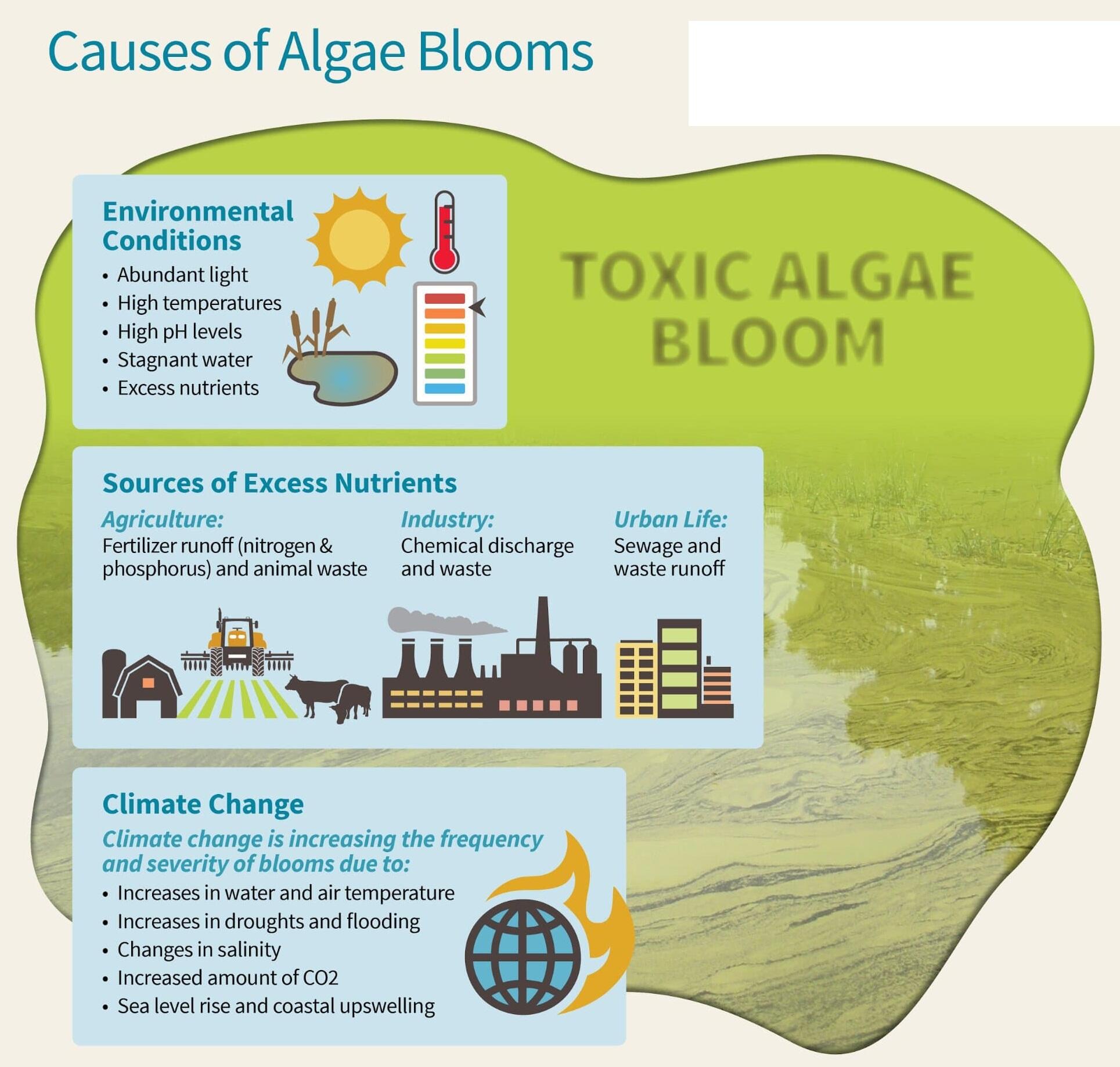
- Warming water temperature:
- Toxic blue-green algae thrive in warm, slow-moving water.
- Warmer water due to climate change might favor harmful algae.
- Warmer temperatures prevent water from mixing, allowing algae to grow thicker and faster.
- Changes in salinity:
- Climate change might lead to more droughts, which make freshwater saltier. This can cause marine algae to invade freshwater ecosystems.
- Higher carbon dioxide levels:
- Algae need carbon dioxide to survive. Higher levels of carbon dioxide in the air and water can lead to rapid growth of algae, especially toxic blue-green algae that can float to the surface of the water.
- Changes in rainfall:
- Climate change might affect rainfall patterns, leading to alternating periods of drought and intense storms. This can cause more nutrient runoff into water bodies, feeding more algal blooms.
- Warming water temperature:
- The African elephant:
- It is the largest animal walking the Earth.
- Their herds wander through 37 countries in Africa.
- They are vulnerable as per the International Union for Conservation of Nature (IUCN) Red List.
- African elephants in Botswana, Namibia, South Africa and Zimbabwe are included in the Convention on International Trade in Endangered Species of Wild Fauna and Flora (CITES) Appendix II.
- Appendix II includes species not necessarily threatened with extinction, but in which trade must be controlled in order to avoid utilization incompatible with their survival.
- Two Subspecies: The Savanna (or bush) elephant and the Forest elephant.
- Savanna elephants are larger than forest elephants, and their tusks curve outwards.
- Forest elephants, a distinct subspecies of African elephants, are uniquely adapted to the forest habitat of the Congo Basin, but are in sharp decline due to poaching for the international ivory trade.
- The World Elephant Day is celebrated on 12th August every year to spread awareness for the conservation and protection of the largest mammal on land.
- The day was launched in 2012 to bring attention to the urgent plight of Asian and African elephants.
Botswana
- It is a landlocked country of southern Africa.
- Botswana is mostly flat with a few hills, most of its highest points located along the south-east section of the country (the eastern edge of the Kalahari Basin).
- The semi-arid Kalahari Desert covers about 70% of Botswana's surface.
- While Kalahari does receive about 500 millimetres in the wettest parts per annum, the Kalahari is considered a desert because it has a vast surface area covered with sand.
- Biodiversity: It is home to plants and animals, mostly different types of acacia trees, animals like lion, cheetah, leopard, hyena, antelopes, meerkats, as well as many birds species and reptiles.
- Indegenous People: It is also home to the tribes like- San people (Bushmen), Tswana, Kgalakgadi, and Herero people.
- Okavango Delta: It is one of the world's largest inland deltas.
- It spans about 15,000 square kilometres and is relatively flat topography.
Increase in Frequency of Medicanes
Why in News
Scientists have warned that extra-tropical storms in the Mediterranean Sea, known as ‘Medicanes’ or ‘Mediterranean Hurricanes’, could become more frequent due to human-induced climate change.
Key Points
- Medicanes:
- Medicanes are tropical-like cyclones formed over the Mediterranean Sea.
- With the surrounding dry climate and the relatively shallow waters of the sea, the occurrence of tropical-like cyclones is infrequent.
- They typically form in the fall or winter months and occur once or twice a year.
- On September 18, 2020, a medicane named Lanos made landfall along the coast of Greece and caused heavy rainfall and flooding in Greece and surrounding islands.
- Comparison with Tropical Cyclones:
- These occur more in relatively colder waters than tropical cyclones, hurricanes and typhoons. Hence, the cores of these storms are also cold, as compared to the warm cores of tropical cyclones (but warmer as compared to extra-tropical cyclones).
- These are typically smaller in diameter and have lower wind speeds than true tropical cyclones.
- Sometimes, warm-cored tropical cyclones transform into cold-cored extratropical cyclones and in rare cases, the opposite can also happen.
- Such an event of extra tropical cyclone becoming a tropical cyclone occurred in November 2011 and caused severe flooding in parts of Spain, Italy and France, killing 11 people.
- Increase in Occurrence
- Medicanes have increased in number in the past half-century.
- Two of these storms, one in 2005 and another in 2012, even formed over the Black Sea, which is a much smaller water body than the Mediterranean Sea.
- Due to global warming, warmer sea surface temperatures in the Mediterranean can allow the storms to take on more tropical appearances and characteristics, increasing the wind speeds and making the storms more intense and cause heavier rainfall.
- This year is a mild La Niña, according to the World Meteorological Organization. La Niña tends to reduce the land falling hurricanes but even if the La Niña this year is mild, the hurricane season is very active. This implies that the impacts of El Niño Southern Oscillation (ENSO) are being modulated by global warming in all oceans, including the Mediterranean.
- La Niña is the cooling phase of the ENSO cycle in the equatorial Pacific Ocean, as opposed to the warming El Niño phase. It is characterised by the unusual cooling of the central and east-central equatorial Pacific Ocean.
- The Special Report on the Ocean and Cryosphere in a Changing Climate released Intergovernmental Panel on Climate Change (IPCC) in 2019 warns of increased temperatures and more frequent extreme El Niño and La Niña events.
- Threats:
- Increase in frequency of medicanes will be a threat for already vulnerable populations living in North Africa, possibly triggering human migration.
- They could also be a menace for European countries like Italy and Greece.
India based Neutrino Observatory
Why in News
An India based Neutrino Observatory (INO) is going to be set up in Bodi West Hills, in Theni district, Tamil Nadu.
Key Points
- About : INO Project is a multi-institutional effort aimed at building a world-class underground laboratory with a rock cover of approx. 1200 m for non-accelerator based high energy and nuclear physics research in India.
- National Neutrino Collaboration group (NNCG): It includes more than 50 scientists from about 15 Institutes and Universities in India and is tasked with detailing various aspects related to INO activity and come up with a proposal for an underground neutrino laboratory.
- Funded by : Dept. of Atomic Energy (DAE) and the Dept. of Science and Technology (DST).
- Objectives: INO will observe neutrinos and antineutrinos produced in the atmosphere of the Earth.
- Over the years this underground facility is expected to develop into a full-fledged underground science laboratory for other studies in physics, biology, geology, hydrology etc.
- Features: The project includes:
- Underground laboratory and associated surface facilities at Bodi West Hills.
- Construction of a magnetized Iron Calorimeter (ICAL) detector for studying neutrinos.
- When completed, ICAL will have the world's largest magnet.
- Setting up Inter Institutional Centre for High Energy Physics (IICHEP) at Madurai
- Advantages:
- This observation will tell us more about the properties of neutrino particles, whose main source is the Sun and the Earth's atmosphere.
- This will also help in developing a model of physics beyond the so-called Standard Model of Particle Physics.
- The Standard Model of particle physics is the theory describing three of the four known fundamental forces (the electromagnetic, weak, and strong interactions, and not including the gravitational force) in the universe, as well as classifying all known elementary particles i.e. electrons, protons and neutrons.
- It would also have a great impact on diverse fields such as nuclear and particle physics, astrophysics and cosmology, medical imaging etc.
- Issues Involved:
- The project was challenged before the National Green Tribunal (NGT) for adversely affecting the ecosystem of Western Ghats. However , it was granted environmental clearance by NGT.
- The villagers in the Pottipuram Panchayat (at Bodi West Hills) have been agitating against the proposed observatory under the banner of Poovulagin Nanbargal (Friends of the earth).
Neutrinos
- Detected for the first time in 1959, neutrinos are the second most abundant particles in the world (about a billion of them pass through a cubic centimeter of space every second), after photons, or the light particle.
- Neutrinos are subatomic fundamental particles, with no charge and little or zero mass that interacts only via the weak subatomic force and gravity.
- Neutrinos are created by various radioactive decays; during a supernova, by cosmic rays striking atoms etc.
- They are considered mass less according to the Standard Model of Particle Physics.
- However recent experiments indicate that these charge-neutral fundamental particles have finite but small mass which is unknown. Also, different species (or flavours ) of neutrinos seem to mix and oscillate into one another as they traverse through the cosmos.
- Determination of neutrino masses is one of the most important open problems in physics today. Neutrino Detectors are used to study the details of the interactions of these particles
- They pass seamlessly through most objects that come in their way, including human beings, machines or the Earth’s surface, without being noticed. That is the reason why scientists have to go deep underground to set up special detectors in a bid to catch the faint signals of neutrinos in an environment that is relatively free from ‘noise’ and disturbance.
O-SMART Scheme
Why in News
The Ocean Services, Modelling, Applications, Resources and Technology (O-SMART) Scheme was approved by the Union Cabinet in August 2018 and is implemented by the Ministry of Earth Sciences.
Key Points
- It aims at stepping up ocean research and setting up early warning weather systems.
- It addresses ocean development activities such as services, technology, resources, observations and science and provides necessary scientific and technological background required for implementation of various aspects of Blue Economy.
- Objectives:
- To generate and regularly update information on Marine Living Resources and their relationship with the physical environment in the Indian Exclusive Economic Zone (EEZ).
- To periodically monitor levels of seawater pollutants for health assessment of coastal waters of India, to develop shoreline change maps for assessment of coastal erosion due to natural and anthropogenic activities.
- To develop a wide range of state-of-the-art ocean observation systems for the acquisition of real-time data from the seas around India and to cater to the testing and sea trial activities of ocean technology.
- To generate and disseminate a suite of user-oriented ocean information, advisories, warnings, data and data products for the benefit of society.
- To develop high-resolution models for ocean forecast and reanalysis systems.
- To develop algorithms for validation of satellite data for coastal research and to monitor changes in the coastal research.
- Acquisition of Coastal Research Vessels (CRVs) for coastal pollution monitoring, testing of various underwater components and technology demonstration and to support their operation and maintenance.
- To develop technologies to tap the marine bioresources, generate freshwater and ocean energy and develop underwater vehicles and technologies.
- Establishment of Ballast water treatment facility.
- Ballast Water Discharge by ships is responsible for the introduction of invasive species in the oceans by taking water from one port and discharging it during the next port call.
- To carry out exploration of Polymetallic Nodules (MPN) from water depth of 5500 m in site of 75000 sq. km allotted to India by United Nations in Central Indian Ocean Basin, and to carry out investigations of gas hydrates.
- MPN, also called manganese nodules, are rock concretions formed of concentric layers of iron and manganese hydroxides around a core.
- MPN contain multiple metals like copper, nickel, cobalt, manganese, iron, lead, zinc, aluminium, silver, gold and platinum etc. in variable constitutions and are precipitate of hot fluids from upwelling hot magma from the deep interior of the oceanic crust.
- Mining for Polymetallic nodules is of strategic importance for India as there are no terrestrial sources of these metals in India.
- Exploration of polymetallic sulphides near Rodrigues Triple junction (convergence of Central Indian Ridge, the Southeast Indian Ridge, and the Southwest Indian Ridge) in 10000 sq. km of area allotted to India in International waters by International Seabed Authority.
- Submission of India's claim over continental shelf extending beyond the EEZ supported by scientific data, and the Topographic survey of EEZ of India.
Komodo Dragon
Why in News
A recent study conducted by Australian universities has found out that the Komodo dragon could become extinct in the next few decades due to climate change.
- In February 2019, the government of Australia officially declared the first known extinction of a mammal (Bramble Cay melomys) as a result of human-induced climate change.
Key Points
- Scientific Name: Varanus komodoensis.
- Komodo dragons are the largest and heaviest lizards on Earth. They have long, flat heads with rounded snouts, scaly skin, bowed legs, and huge, muscular tails.
- Komodo dragons can eat almost anything, including invertebrates, birds, and mammals like deer, pigs, and even large water buffalo.
- They have venom glands loaded with toxins which have been shown to secrete anticoagulants.
- An anticoagulant is a compound which prevents the victim's blood from clotting, causing it to bleed to death.
- The venom lowers blood pressure, causes massive bleeding, and induces shock.
- Habitat:
- Komodo dragons have thrived in the harsh climate of Indonesia's Lesser Sunda Islands for millions of years. They prefer the islands’ tropical forests but can be found across the islands.
- Komodo National Park, a UNESCO World Heritage site, is situated in the Island of Komodo (eastern Indonesia) and is the only habitat for this lizard species.
- Threats:
- Anthropogenic factors.
- Small size of population, less prey and higher inbreeding factors.
- Climate change is likely to cause a sharp decline in the availability of habitat, reducing their populations even further.
- Conservation:
- IUCN Status: Vulnerable.
- CITES: Appendix I. (The commercial trading of live specimens or any parts, dead or alive of Komodo is prohibited.)
- In August 2019, the Indonesian government ordered the relocation of the residents of the Island of Komodo in a bid to conserve Komodo dragons and the Komodo National Park.

